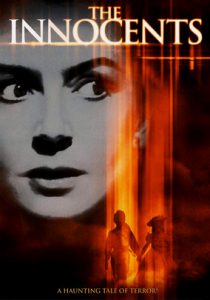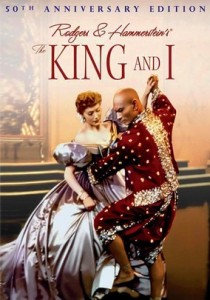The Innocents-1961
Director Jack Clayton
Starring Deborah Kerr
Top 250 Films #94
Top 40 Horror Films #17
Scott’s Review #639
Reviewed April 29, 2017
Grade: A
The Innocents is a 1961 British psychological horror film that tells a ghost story, based on the novella “The Turn of the Screw” by Henry James.
Although it is a horror film, it contains few traditional elements, such as contrived frights, jumps, and blood. Instead, the film succeeds by using lighting and magnificent cinematography by Freddie Francis.
And, of course, fantastic storytelling and direction from Jack Clayton.
Deborah Kerr gives an excellent turn as a beleaguered governess hired by a wealthy bachelor (Michael Redgrave) to tend to his young niece and nephew, Flora and Miles.
The setting is a lavish yet creepy mansion located outside London. As the Uncle goes away to India on business, Miss Giddens, with no previous experience, is left to tend to Flora and Miles, who both begin acting strangely.
To complicate matters, Miss Giddens sees sinister ghosts lurking around the property. The ghosts are former household servants who have passed away, of whom Miss Giddens has never met.
Miss Giddens is assisted only by the kindly housekeeper, Mrs. Grose, who tells her about the servants’ tragic deaths.
The Innocents, shot in black and white, uses sound to its advantage. This, combined with the interesting camera angles and focus shots—mainly of the ghosts Miss Giddens sees—makes the film unique and scary.
When she hears strange voices, she becomes convinced that Miles and Flora are playing tricks on her, engaging in games with her. The whispers’ sounds are haunting and do wonders for the effects, chilling the viewer as the film progresses.
Is Miss Giddens imagining the voices and visions, or is this an actual reality? Could the children be sinister and playing a vicious prank on her? Could Mrs. Grose be evil?
Nobody else within the household sees or hears anything amiss- or admits to it.
Kerr, a treasured actress, plays the part with emotional facial expressions and genuine fear, so much so that she wins the audience over as we side with and empathize with her character. Still, is she a woman on the verge of a mental breakdown? Does she have past mental problems?
Like her uncle, we know nothing of her past, only that she claims to be the daughter of a minister. How, then, does she have stylish, expensive clothes? Could she only be pretending to be a governess? Has she run away from her past?
The Turn of the Screw is a true ghost story, but The Innocents is a bit different —it relies, successfully, on being more of a character-driven story.
As Miss Giddens becomes convinced that the spirits of the servants have possessed both children, she makes it her mission to rescue them from these spirits. We have an ominous feeling that events will not end well, and they do not.
Several scenes will frighten the viewer, as Miss Giddens sees a haggard ghost (the female servant) quietly standing in the distance near a lake as Flora dances chirpily; the image of the faraway ghost figure is eerie and well-shot.
The film draws comparisons to the classic Hitchcock film Rebecca (1940). Each is set in a large mansion and features complex villains who are portrayed as deceased characters.
Also, the sanity of the main character is in question.
With a compelling story and the nuts and bolts surrounding the tale to add clever effects and a chilling conclusion, the film succeeds as an excellent and intelligent horror film.
With great acting all around, including fantastic performances by child actors, The Innocents (1961) scares the daylights out of any horror fan and uses exterior and interior scenes to make the film an all-around marvel.




